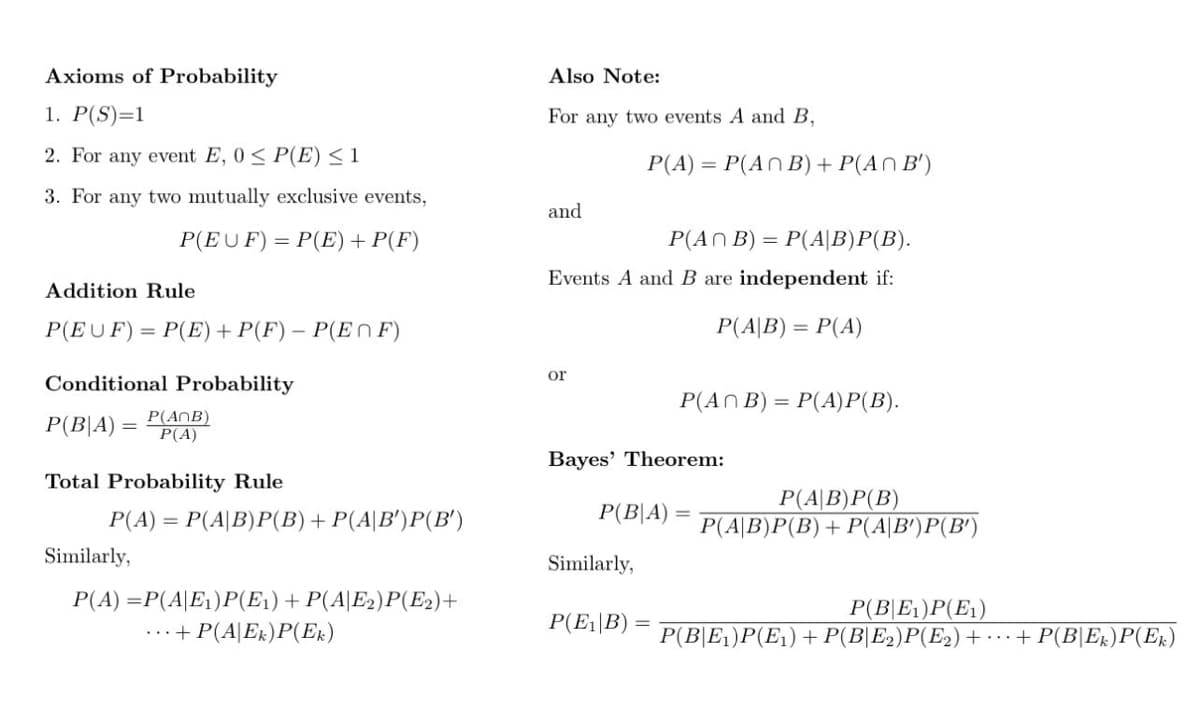An animal shelter has kittens and adult cats available for adoption. Suppose that 30% of all cats are kittens. Probability of adoption for a kitten is 0.8, whereas the probability of adoption for an adult cat is only 0.6. On the other hand, 20% of all cats are black and the probability of adoption for a black cat is 0.1. (a) What is the probability of adoption for a randomly chosen cat? (b) If a cat is adopted, what is the probability that it is a kitten? (c) What is the probability of adoption for a non-black cat? (d) Is the adoption chances of a cat is dependent on its coloring? Justify your answer mathematically.
An animal shelter has kittens and adult cats available for adoption. Suppose that 30% of all cats are kittens. Probability of adoption for a kitten is 0.8, whereas the probability of adoption for an adult cat is only 0.6. On the other hand, 20% of all cats are black and the probability of adoption for a black cat is 0.1. (a) What is the probability of adoption for a randomly chosen cat? (b) If a cat is adopted, what is the probability that it is a kitten? (c) What is the probability of adoption for a non-black cat? (d) Is the adoption chances of a cat is dependent on its coloring? Justify your answer mathematically.
Holt Mcdougal Larson Pre-algebra: Student Edition 2012
1st Edition
ISBN:9780547587776
Author:HOLT MCDOUGAL
Publisher:HOLT MCDOUGAL
Chapter11: Data Analysis And Probability
Section11.8: Probabilities Of Disjoint And Overlapping Events
Problem 2C
Related questions
Question
Please answer correctly and show all your work. Attached is the formula sheet you can use.

Transcribed Image Text:An animal shelter has kittens and adult cats available for adoption. Suppose that 30% of all cats are
kittens. Probability of adoption for a kitten is 0.8, whereas the probability of adoption for an adult
cat is only 0.6.
On the other hand, 20% of all cats are black and the probability of adoption for a black cat is 0.1.
(a) What is the probability of adoption for a randomly chose cat?
(b) If a cat is adopted, what is the probability that it is a kitten?
(c) What is the probability of adoption for a non-black cat?
(d) Is the adoption chances of a cat is dependent on its coloring? Justify your answer mathematically.

Transcribed Image Text:Axioms of Probability
Also Note:
1. P(S)=1
For any two events A and B,
2. For any event E, 0< P(E) < 1
P(A) = P(AN B) + P(AN B')
3. For any two mutually exclusive events,
and
P(EUF) = P(E)+ P(F)
P(AN B)
P(A|B)P(B).
Events A and B are independent if:
Addition Rule
P(EUF) = P(E)+ P(F) – P(EnF)
P(A|B) = P(A)
or
Conditional Probability
P(AN B) = P(A)P(B).
Р(BJA) —
P(ANB)
P(A)
Bayes' Theorem:
Total Probability Rule
Р(A В)P(В)
Р(А|B)Р(В) + Р(A|B')P(В')
P(A) = P(A|B)P(B)+P(A|B')P(B')
P(B|A)
Similarly,
Similarly,
P(A) =P(A|E1)P(E1) + P(A|E2)P(E2)+
...+ P(A|Ek)P(Ek)
P(B|E1)P(E1)
P(B|E1)P(E1) + P(B|E2)P(E2) + · .+ P(B|ER)P(Ex)
P(E1|B)
Expert Solution
This question has been solved!
Explore an expertly crafted, step-by-step solution for a thorough understanding of key concepts.
This is a popular solution!
Trending now
This is a popular solution!
Step by step
Solved in 2 steps with 2 images

Recommended textbooks for you

Holt Mcdougal Larson Pre-algebra: Student Edition…
Algebra
ISBN:
9780547587776
Author:
HOLT MCDOUGAL
Publisher:
HOLT MCDOUGAL


Holt Mcdougal Larson Pre-algebra: Student Edition…
Algebra
ISBN:
9780547587776
Author:
HOLT MCDOUGAL
Publisher:
HOLT MCDOUGAL
